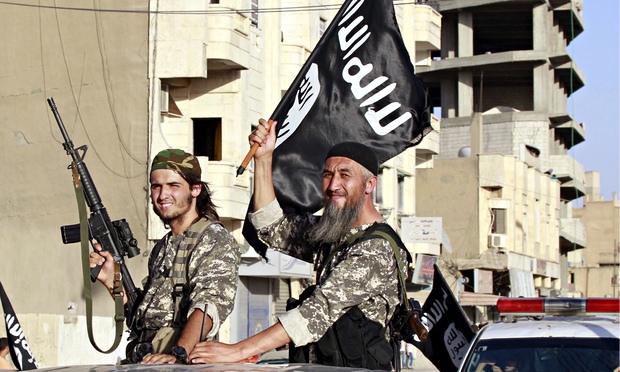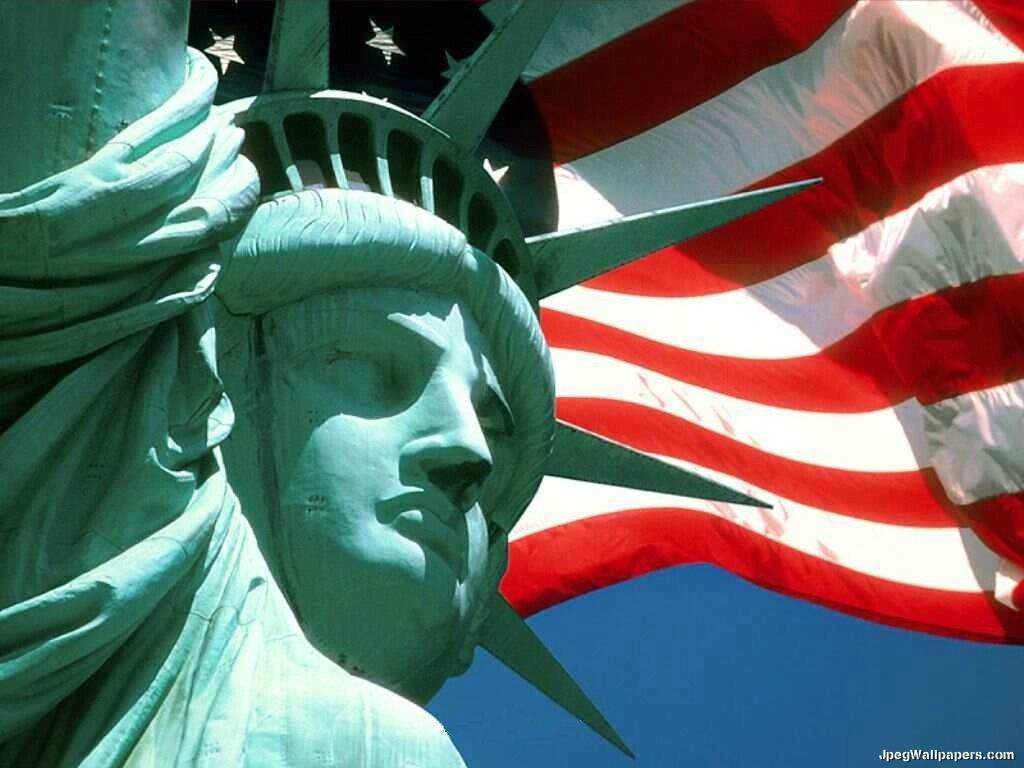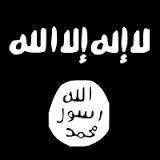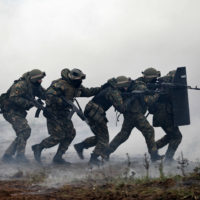The so-called Islamic State has managed to establish itself as a strong and well-established militant organization which controls vast areas of Syria and Iraq. The organization proved itself as capable of independently financing its campaign, waging successful armed struggle despite both regional and international efforts to damage it, and building supreme bureaucratic structure to ensure governance in controlled areas. This article is the first part of the series that aims to offer in-depth analysis into the Islamic State’s financing, organizational structure, and governance in controlled territories.
INTRODUCTION
The Islamic State has been enormously successful in creating local financial capacities which gradually made it the richest terrorist organization in the world with estimated daily revenues from 1 to 3 millions of dollars. It shall be noted the Islamic State’s quest for building local and sustainable sources of income can be traced to its organizational predecessors during the US occupation of Iraq. IS relies on several sources of income (ordered by their estimated importance): oil, criminal enterprises (such as selling archaeological artefacts on black market, extortion of population, kidnapping for ransom, racketeering, smuggling, human trafficking…), „taxation“ and „customs“, seizing property of non-complying, mostly non-Sunni population, and foreign financial support. Compared to for example al-Qaeda the IS does not rely on outside financial support and indeed has sustainable and robust income from exploiting controlled territories. As Lucas pointed out „ (…) the best answer to „Who funds ISIS“is….ISIS. “ It shall be also noted that all the estimates of the production and size of revenues is mostly based on analytical estimates which in most of the cases rely on analysis of seized documents and accounting books. Current estimates of revenues are either based on contemporary data or are mainly extrapolated from previously seized materials from 2005-2010.

OIL
So far the biggest portion of IS income comes from selling mainly crude oil. Estimates talk about daily revenues between 1 and 3 millions of dollars from selling crude on black market. IS-controlled oil wells produced before the beginning of the air bombing campaign some 30-70 thousand of b/d. Islamic State forces control around 60 % of operating oil fields in (mainly northeaster) Syria and additional 350 oil wells in Iraq.
There are several existing markets where IS sells its oil. Firstly, the old smuggling routes to Turkey, Iraq (both Kurdish-controlled and Baghdad-controlled), Jordan, and also to Iran are being used. According to various sources the crude is being transported on trucks, semi-trucks, or mules as it has been ordinary in the region. „Homemade“ pipelines crossing border tu Turkish villages were also being used, however it seems that Turkish authorities ceased to tolerate such activities and are engaged in dismantling them. Secondly, crude oil is most probably largely being sold in conflict areas including to Assad’s regime. Complete dismantling of these traditional smuggling routes is ultimately impossible, it can be only limited by stronger enforcement of respective countries (such as we saw in case of Turkey and Jordan). Preventing IS from selling oil and also already refined fuel in its refineries to Syrian regime forces is highly unlikely, since the Assad’s regime simply cannot sustain its campaign without these resources.

IS also has to cover its domestic demand for fuel to satisfy controlled population and to continue waging its armed campaign. IS controls several oil refineries in Syria but it is questionable how many of them are still operating after air raids. Situation in Iraq regarding refineries is rather different – during its sweep through central Iraq it gained control of some refineries but the pattern that emerged shows that IS allegedly more often refined crude in Syria or (and that is more frequent in last few months due to air raids) used small mobile or concealed improvised refineries, which are however also being targeted by air strikes. Grasp on Iraqi refineries has not been as long-term and strong as in Syria. For example the important refinery in Baiji has never been fully under IS control and it was retaken by Iraqi forces in the beginning of December.
The American-based International Energy Agency estimates that contemporary crude production in IS-controlled areas is around 20 thousand b/d due to successful air raids on oil wells and refining infrastructure. If we overview conducted aerial attacks we see that targeting oil infrastructure is not the solely or primary objective. The reason is in my opinion long-term calculation that this particular infrastructure will be needed for future rebuilding efforts. Also it shall be noted that large portion of the oil infrastructure is in the „periphery“ of IS-controlled lands (especially those in Iraq) and therefore might be retaken. Oil still remains major source of IS’ revenues but indeed not the only source of income. As Levitt points out there is no „silver bullet“ to destroy the IS’ financing system. Destroying majority of oil infrastructure would damage IS severely but it would not be fatal. So far it seems that the anti-IS campaign damages oil infrastructure only to a limited extent and to curb this source of income more restrictive policies against smuggling to neighbouring countries are being pursued. Smuggling and selling IS’s oil whenever possible will indeed continue but with governments efforts to damage such activities, the price for IS-sold barrel of oil will probably go way below estimated average 40 dollars per barrel and thus lower organization’s income.
Another less-mentioned but in longer perspective major issue for the IS is lack of qualified personnel to operate oil infrastructure. They for example already started „recruiting campaign“ for engineers and other experts. The oil infrastructure in both Syria and Iraq is obsolete and requires frequent maintenance and without skilled labour, specific spare parts and materials it is unlikely that IS would sustain their extensive functioning for longer period of time (e. g. one or two years).
CRIMINAL ENTERPRISES
The Islamic State indeed runs as a well-organized corporation that engages in wide range of criminal activities. Analyses of the IS predecessors suggest that they were financially self-sufficient even in the period of 2005-2010 when they increased their income from criminal activities up to 200 millions of dollars annually. When Abu Bakr al-Baghdadi came to power in 2010 he inherited already well established and financially self-sustainable organization which he further enhanced. Allam correctly points out that „Mosul was really the money-maker.“ With the gradual pull-out of US forces from Iraq al-Baghdadi started to establish more deeper presence in Mosul. Up to 2013’s ISIS resolute move to control vast areas in Syria, Mosul was already the main basis for its criminal revenues with strong bureaucratic-like presence and wide extortion of population, racketeering etc. It is estimated that Mosul itself brought to IS budget 12 millions of dollars per month in 2014.
Mosul served as an established role model for criminal enterprises that has been replicated in other areas in Iraq (e. g. al-Anbar province) and Syria (e. g. ar-Raqqah). Al-Baghdadi established „Financial Command“ in 2010 in the city of Mosul in order to further bolster and „institutionalize“ existing bureaucratic and administrative structures serving also as base for more effective financial exploitation of controlled areas. In Mosul and of course in other controlled areas and cities (both in Iraq and Syria) IS engages in wide range of criminal activities. IS’s „criminal corporation“ engages in extortion, robberies, highly organized and complex racketeering business, kidnapping civilians for ransom, stealing livestock etc. It is estimated that only in 2014 the IS has had revenue of some 20 millions of dollars for kidnappings for ransom. Bank robberies were also welcomed source of income up to the point when IS consolidated its presence in controlled areas. The most known example is robbery in Mosul’s branch of the Central Bank of Iraq in June 2014, where IS took over 400 millions of dollars.
It shall be noted that those activities were already in the organization’s repertoire in 2005-2010 when it was widely known under name al-Qaeda in Iraq (AQI). Levitt states that even in 2005-2010 organization’s revenues from well-established criminal activities itself had increased up to 200 millions of dollars. With IS’s increasing presence in Iraqi Sunni provinces (mainly in al-Anbar, al-Nineveh, Salah al-Din, al-Diyala) that ramped up with growing instability after Baghdad’s security forces crackdown in April of 2013 brought more and more revenues from such enterprises while state’s security forces were unable to grasp on such activities. Combined with increasing success in Syria this created more consolidated and interconnected system of revenues from criminal enterprises. Nowadays we experience that there is somehow different way of exploitiong fully-controlled and not fully-controlled areas. In controlled areas there has been extensive effort to standardize exploition and extortion of population, effort to create „more official taxation system“ (see following subsection „Legal“ Enterprises). In areas of presence but not full control IS continues less standardized exploitation and conducting criminal activities as we saw in case of AQI and in early days of ISIS, before it gained full control over areas in Syria and swept through north-western Iraq. „Even in the areas not under its complete control, IS still maintains extortion networks and protection rackets.“

After IS’s rapid sweep through Iraq in August of 2014 and further consolidation of controlled areas and bolstering its bureaucratic structures there has been also surge of revenues. Major source of income is indeed also selling artifacts from archaeological excavations on black market. IS controls one third of 12 thousand archaeological sites of Iraq and according to some sources organizes excavations. It is indeed hard to determine the amount of such income, however there has been several cases when such artifacts were found e. g. in Western Europe. Another major source of income are seizing property of non-Sunni population, introducing head-tax for non-Muslims (but majority of them left anyway). Those sources of income are only one-time and does not constitute sustainable revenue. On the other hand they were welcomed immediate financial boost to support the campaign.
While the IS controlls vast areas it also introduces „custom fees“ on goods coming to and through its controlled territories. According to Jordanian sources, IS runs several checkpoints on the main road from Syria and Jordan to Baghdad through al-Anbar province (al-Walled and al-Tanif crossings). All the trucks and vehicles carrying goods are being checked and IS fighters collect 300 dollars for large trucks with foodstuff and some 800 dollars for electronics, other sources suggest 100 dollars is collected for smaller trucks. Interesting point is that IS issues their own papers and receipts about the payment which is then shown by the drivers in other checkpoints. As a bonus truck drivers receive counterfeited Iraqi Federal Government’s papers to avoid „double-taxation“ while driving pass Iraqi security forces‘ checkpoints. It is impossible to determine total income from such „custom collecting“ activities, however I consider it as rather minor income. Despite the fact that trucks are still going through IS-controlled areas there are not as many as in the pre-IS era.
Illicit drug trade for IS’s domestic needs or even engagement in smuggling drugs through its territory so far does not occur as existing and systematically used source of income. Contrary to widely accepted opinion, sex-trafficking and in general human-trafficking does not appear as major source of income as well. Non-Sunni women (such as estimated 3000 Yazidi women) are being sold for rather low prices and are being bought mainly by the IS fighters. It appears that sex-trafficking serves as an additional incentive for the IS members who can buy them for very low prices. Some sources suggests that IS engages in harvesting organs and selling them on black market. It is however impossible to verify reports about such activities and determine whether they are merely episodic events or systematically pursued by the IS. On the other hand, as we have experience with IS’s adaptability, it is in my opinion rather probable that the group will resort to more systematic use of organ and human trafficking, possibly even drug trade when their other sources of income will dry up (or will be damaged by the anti-IS campaigns).
FOREIGN SUPPORT
Saudi Arabia, United Arab Emirates, Qatar, and Kuwait are being considered as countries of origin for the financial support for radical groups in Syria (and Iraq). Support through private (or states‘) charitable donations mainly from the Gulf Countries does not constitute major source of income for the IS. Even its predecessor AQI grew financially independent and in 2005-2010 it is estimated that only 5 % of its income came from outside donors. IS obtained only some 20 millions of dollars per year. It is more than likely that importance of the foreign financial support for the IS significantly decreased since 2013. Lori Boghart points out that „Although Saudi donors and other private contributors were believed to be the most significant funding source for the original forerunner to ISIS, the importance of such donations has been marginalized by group’s independent sources of income.“ In my opinion the foreign financial support does not constitute and will most likely not constitute major source of income for the IS. Besides IS’s independent sources of income there are also various financial counter-measures being pursued by Gulf States on the pressure of the US and in the light of those countries distaste for further growth of the IS which may endanger their domestic security situation.
„LEGAL“ ENTERPRISES
Besides wide range of criminal activates we experience attempts to create more „standardized“ ways of making money. IS pursues to create more official taxation and „customs“ system in fully-controlled areas. Standardization of such procedures is motivated on one hand by making perception that it is indeed „a state“ that has its own administration, laws and taxation system. On the other hand it also reduces the risks of skimming, bribery and other negative phenomena which can occur (and occur) in less standardized extortion and money collecting. It shall be also noted that IS and its predecessors aim at creating booking system and bureaucratic procedures in order to prevent such issues. After all, most of the reliable data about IS’s financial system come from analyses of confiscated documents and accounting books. IS also controls key local factories and enterprises that also generate some income. But it seems that the main motivation for assuming management for factories is to create better oversight over key goods and products that are needed to satisfy the population and provide public services.
REVENUE DISTRIBUTION SYSTEM
Organizational strategy and nature of IS’s governance in controlled territories will be thoroughly discussed in one of the following parts of our „Running Islamic State“ series. For the sake of analyzing financing system it is crucial to understand nature of IS’s administration.
There are thirteen „provinces“ of IS and each of them is lead by one governor who oversees administration, control, business and also military operations in the area. Within provinces there are always several districts which has similar organization as the higher levels, we may call them „small emirates“. District leaders are responsible for day-to-day collection of revenues and it is estimated that around 20 % of collected revenues are being sent to higher level in hierarchy (rest of the money is used to cover everyday expenses, such as salaries, education, and to keep public services in order etc.). On the provincial level it is said that revenues from districts are being re-distributed and again part of the money is sent to central level, e. g. to sustain major offensives, and the rest is being sent back on district level where it is needed (for example to sponsor large projects, to strengthen security in „border“ areas etc.).
CONCLUSION
The Islamic State managed to further bolster its independent sources of income that inherited from its organizational predecessors such as al-Qaeda in Iraq (AQI). The IS has estimated monthly income of some xx-xx millions of dollars. The biggest source of income remains crude oil that is being smuggled and sold to neighbouring countries. Main source of IS’s oil are oil wells and infrastructure in Syria since the IS was not able to fully control major fields in Iraq (such as infrastructure in Baiji or major fields around Kirkuk). Estimated contemporary amount of crude produced in a day is 20 thousand b/d being sold for an average price 50 dollars per barrel (30 millions of dollars/month). Buyers can be found either in conflicting countries (Iraq and Syria), but also in Jordan, Turkey, and Iran.
IS also engages in wide range of large-scale criminal activities including racketeering, kidnappings for ransom, robberies, selling artefacts from archaeological excavations, seizure of assets of non-complying population (mainly non-Sunnis) etc. It is indeed problematic to estimate overall income but analyses suggest that only Mosul itself brings to IS’s budget 12 millions of dollars per month throughout 2014. Another report says that only kidnappings has earned IS 20 millions of dollars in 2014. Pattern that seems to emerge is that within fully controlled areas IS pursues for more standardized and „bureaucratic“ and systematic exploitation of population through introducing fixed taxes, customs fees etc. In areas not fully under control the previous pattern of less systematic exploitation in form of racketeering and other criminal activates. Foreign support from the Gulf States does not constitute major source of income.
To conclude, IS has highly complex and independent system of financing which makes it highly self-sufficient. Variety of sources of income is remarkable and there is indeed „no silver bullet“ to damage IS revenues.
Author: Tomáš Kaválek, doctoral candidate, the Department of Politology, Faculty of Social Studies, Masaryk University Brno. He is currently visiting research assistant at the Marmara University Research Center for International Relations (MURCIR) in Istanbul and also intern at the International Crisis Group’s Office in Istanbul.





